Drama rules the Art, and mountains provide an ample source of that drama. In a glaring daylight or in a deceptively serene moonlight, the same peaks and valleys come up with an ingenious variety of landscapes. We don’t mean to undermine the beauty of other natural terrains, but still believe that the mountains have always been a powerful driver for prolific artists, artisans and writers who captured the ethereal beauty of the cliffs, rocks, gorges, peaks, abysses, lakes and valleys in various mountain ranges.
Long before high quality photo cameras engulfed our lives, mountains inspired to visually describe the beauty of the peaks and share it with people all over the world. Devoid of man-made edifices and even people, mountain landscapes are one of the heralds of pristine nature grandeur. Although paintings from the earliest ancient and Classical periods included natural scenic elements, landscape as an independent genre did not emerge in the Western tradition until the Renaissance in the 16th century.
With this list of several prominent pieces of art we hope to whip your interest in the landscape art and induce you to explore new trails out there in any part of the world!
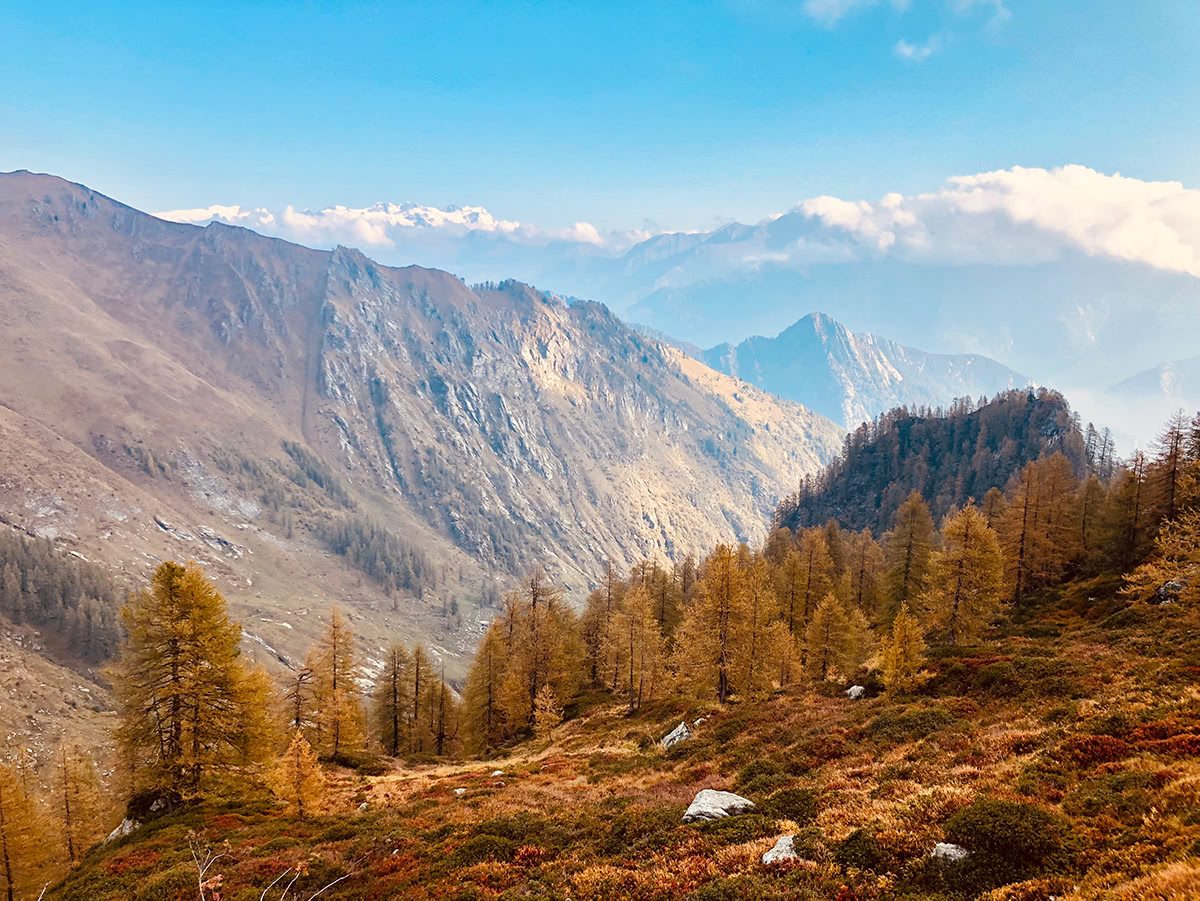
For hundreds of years, artists ventured out and painted their subjects in the open air. Back in the days, painting tools and supplies weren’t as portable as they are now. There were no filters, 3D panoramas and apps to make your landscape not only highly vivid and precise but also informative.
Without further ado, let’s move to the early pioneers who left their traces in the mountains, which can be observed on various art theme trails, such as Malerweg in Saxon Switzerland, Germany.
Europe and its Alps
Here is the first artist whose painting is the symbol of the trail.
Caspar David Friedrich
Caspar David Friedrich (1774 – 1840), a German Romantic landscape painter, who was seeking to capture the infinite and the divine, he took the genre of landscape painting, traditionally considered unimportant, and infused it with deep religious and spiritual significance. Believing that the majesty of the natural world could only reflect the magnificence of God, he featured sunlight vistas and foggy expanses to convey the beautiful power of the divine.
He said "All authentic art is conceived at a sacred moment and nourished in a blessed hour; an inner impulse creates it, often without the artist being aware of it."
His oil painting Wanderer above the Sea of Fog also referred to as The Sea of Fog (German: Der Wanderer über dem Nebelmeer) has been considered one of the masterpieces of Romanticism and one of its most representative works.
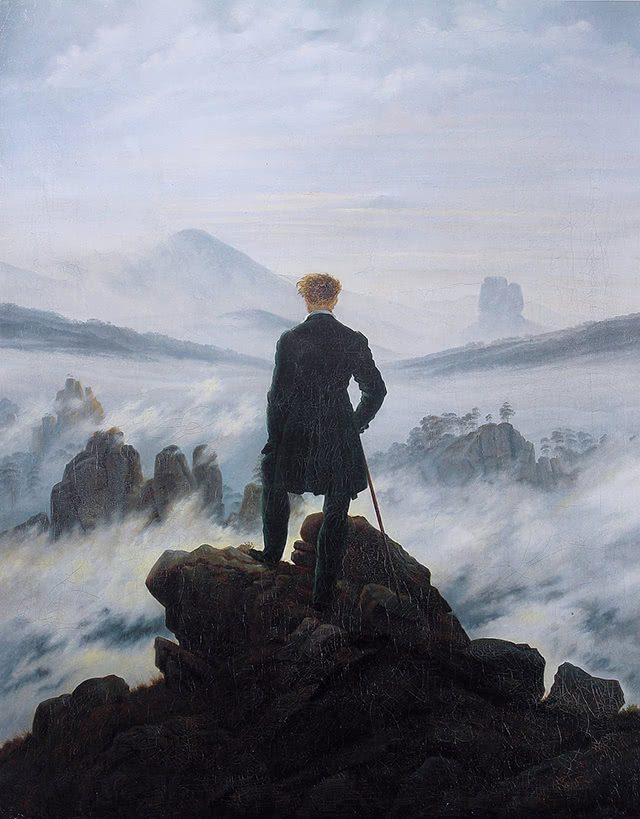
The Watzmann (German - Der Watzmann) is another oil on canvas by Caspar David Friedrich, showing the Watzmann mountain as seen from Berchtesgaden to the north-east.
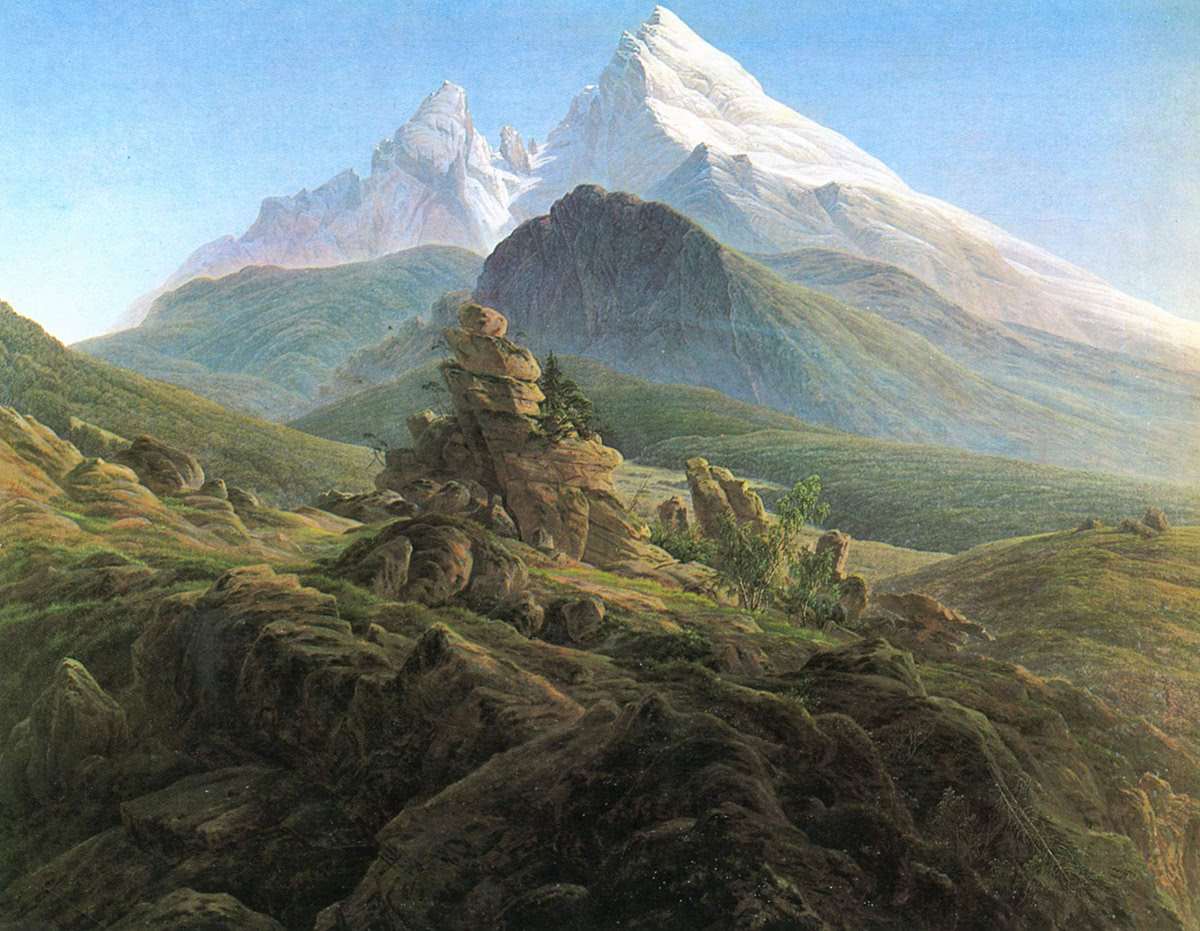
Read more about Caspar David Friedrich on the Art Story.
Giovanni Segantini
Giovanni Segantini (1858 – 1899), an Italian painter known for his large pastoral landscapes of the Alps, was one of the most famous artists in Europe in the late 19th century. Major European art museums hunted for his paintings. In later life, he combined a Divisionist painting style with Symbolist images of nature.
In 1894, Segantini moved to Maloja in the Western Rhaetian Alps and was active there in the last years of his life. There are several hiking trails of various length dedicated to the artist.
The shortest trail called The Segantini Path takes approximately 30 minutes. It is located in Sankt Moritz and begins opposite the Hotel Soldanella, passes behind the Segantini Museum, and ends at the Via Somplaz/Suvretta crossroads. Six picture panels along the way provide all kinds of information about Giovanni Segantini and his works.
The Segantini Trail in Maloja is a wonderful 2-hour hike, which includes 12 stages. At each stage, there is an interpretive panel illustrating Segantini's life and works. Starting at the artist’s house, the trail follows the places that inspired Segantini, the places where he painted several well-known majestic rocky landscapes. The tour ends with a visit to the small cemetery with the family tomb.
Here are some of his visions of the Alps in triptychs and solo canvases.

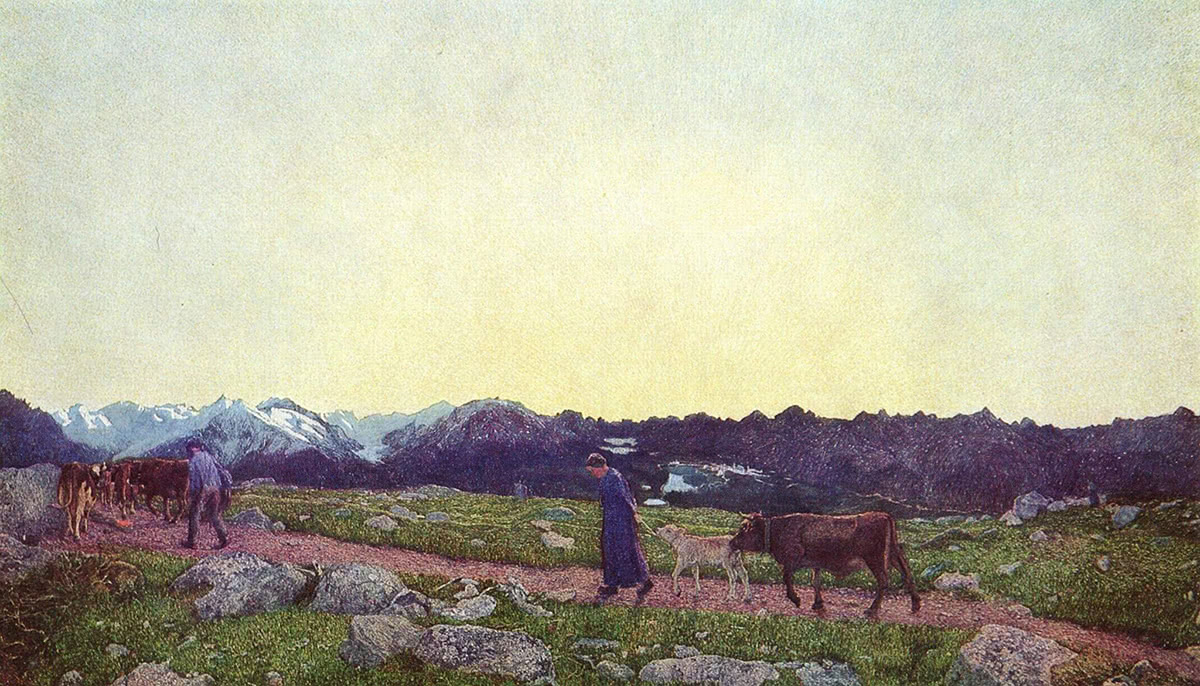

The Punishment of Lust with a woman floating in white robes against the mountains is a part of Nirvana cycle which illustrates the outcome for women who had failed to be a mother either through abortion or even though death (his own mother died when Segantini was a child). He regarded the mountains as his spiritual home – and the inclusion of withered trees symbolises a possible return to life in a new spring.
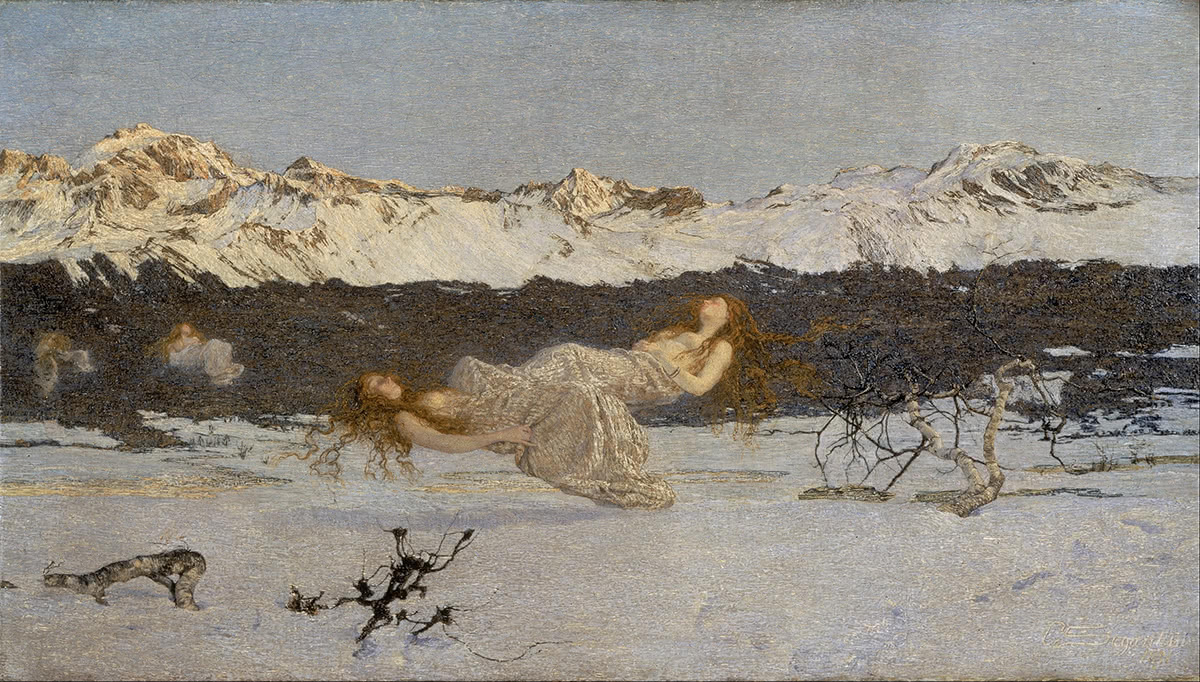
The longest version of the Segantini trails is called Senda Segantini. It is a unique hiking route through the Engadin and Sursetter mountain landscapes. It follows the footsteps of the artist when he moved from Savognin to Maloja and takes 4 days to complete.
Finally, high above Pontresina near the summit of Munt da la Bês-cha there’s a mountain hut dedicated to the artist where he spent his last day. He died in Chamanna Segantini.
Read more about Giovanni Segantini.
Auguste Renoir
Opposing to the earlier meticulously detailed depiction of the mountains, Auguste Renoir (1841 – 1919), a French artist, put the summits on canvass in the Impressionist style. He applied pigment with lively brushstrokes that effectively captured flickering light and atmosphere. He is best known for his paintings of bustling Parisian modernity and leisure in the last three decades of the 19th century, however, he had some trips into the wild to capture the movement of light and shadow.
Here is his Mount of Sainte-Victoire painting, one of his few landscapes of such nature.
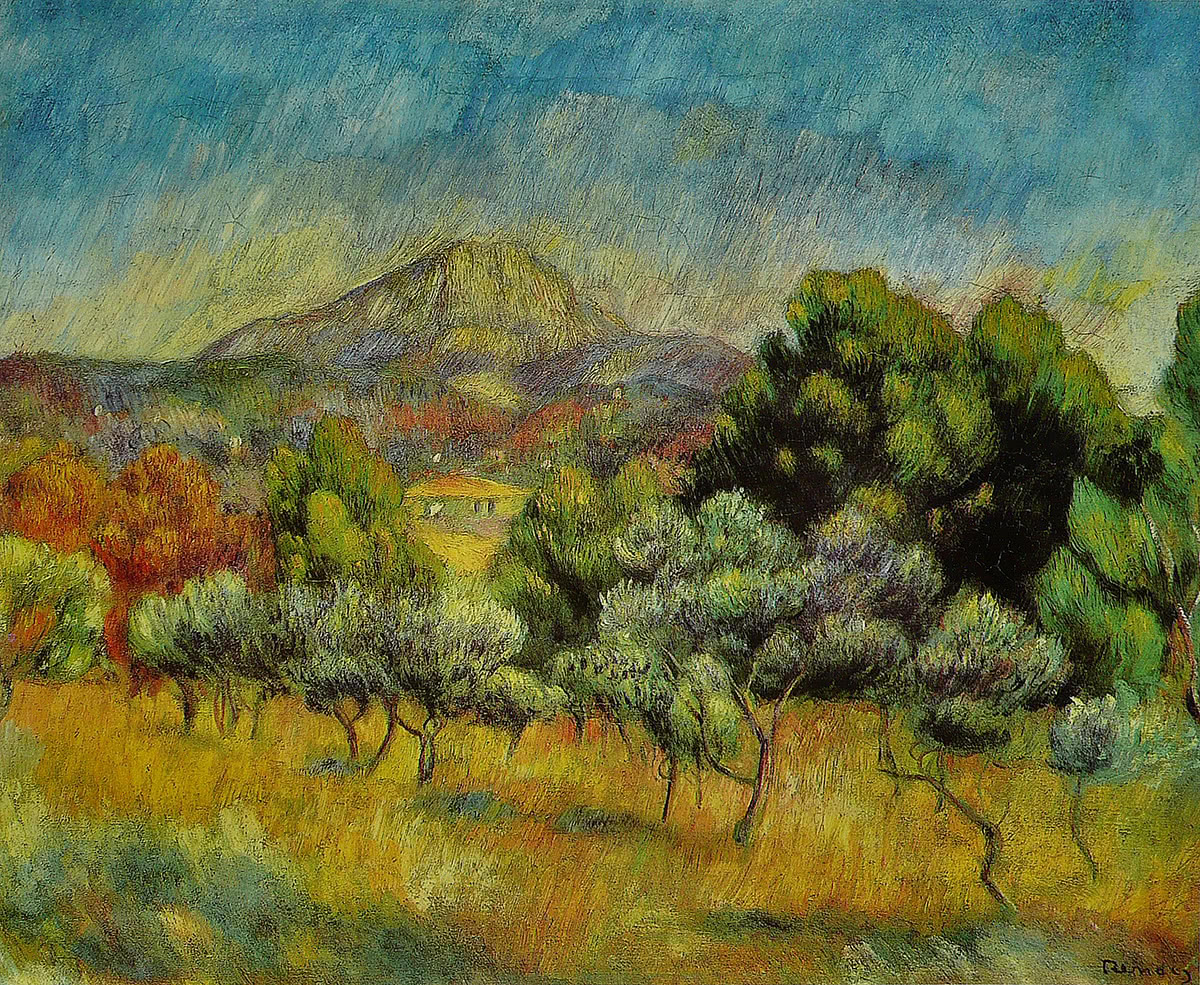
Read more about Auguste Renoir.
J.M.W. Turner
Joseph Mallord William Turner (1775 – 1851) was an English Romantic painter, printmaker and watercolourist, known for his expressive colourisation, imaginative landscapes and turbulent, often violent marine paintings. But this atmospheric photo of the Devil’s Bridge in Switzerland near the Gotthard Pass feels very real and portrays true events of the far past when Russian general Suvorov was crossing the Alps and fighting not only significantly bigger enemy armies but inhumane conditions of Alpine winter as well!
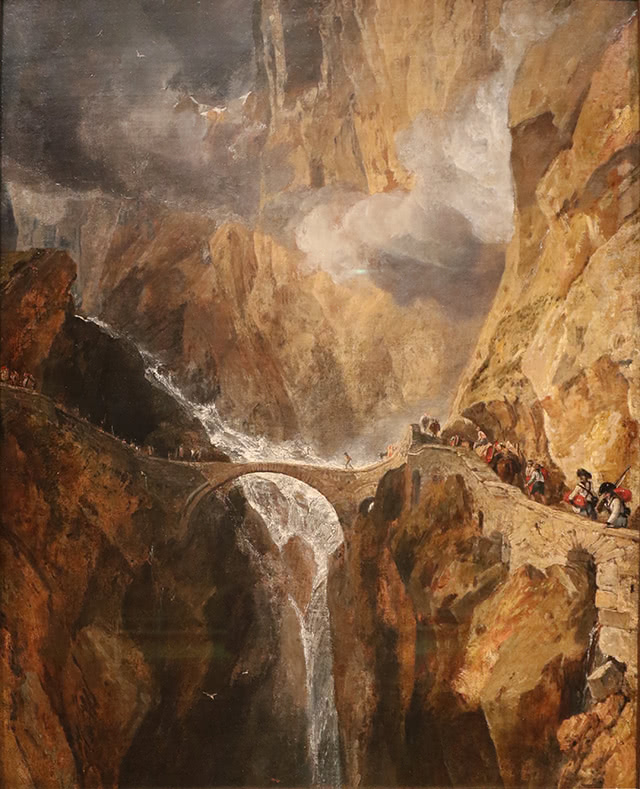
He even managed to find some mountains in his beloved England, which is pretty flat compared to the dramatic peaks of the Alps and Scotland. The View in the Avon Gorge has the full pack of a perfect postcard: a mountain in the back, a stream in the middle and a rebellious tree in front.
Read more about J.M.W. Turner.
North America and Westward Exploration
Thomas Hill
Thomas Hill (1829 – 1908) was an American artist with many fine paintings of California landscapes, in particular those of the Yosemite Valley, Mount Shasta, as well as the White Mountains of New Hampshire. His painting View of the Yosemite Valley, 1865, served as the backdrop for the President Obama's 2009 Inaugural Luncheon in Washington D.C.
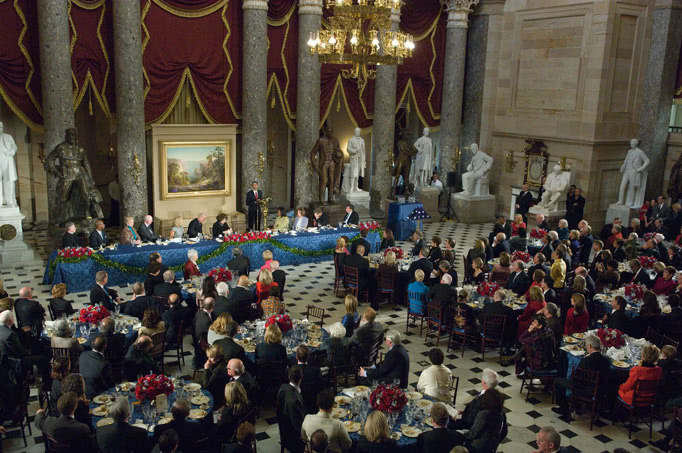
Thomas Hill ran an art gallery and art supply store, a rare occasion at that time for an artist to manage a business as well. He lived on his stock market investments as well as his art proceeds. He briefly acted as the interim director for the SFAA School of Design and went to Alaska on a commission for environmentalist John Muir, the founder of Sequoia and Yosemite National Parks.
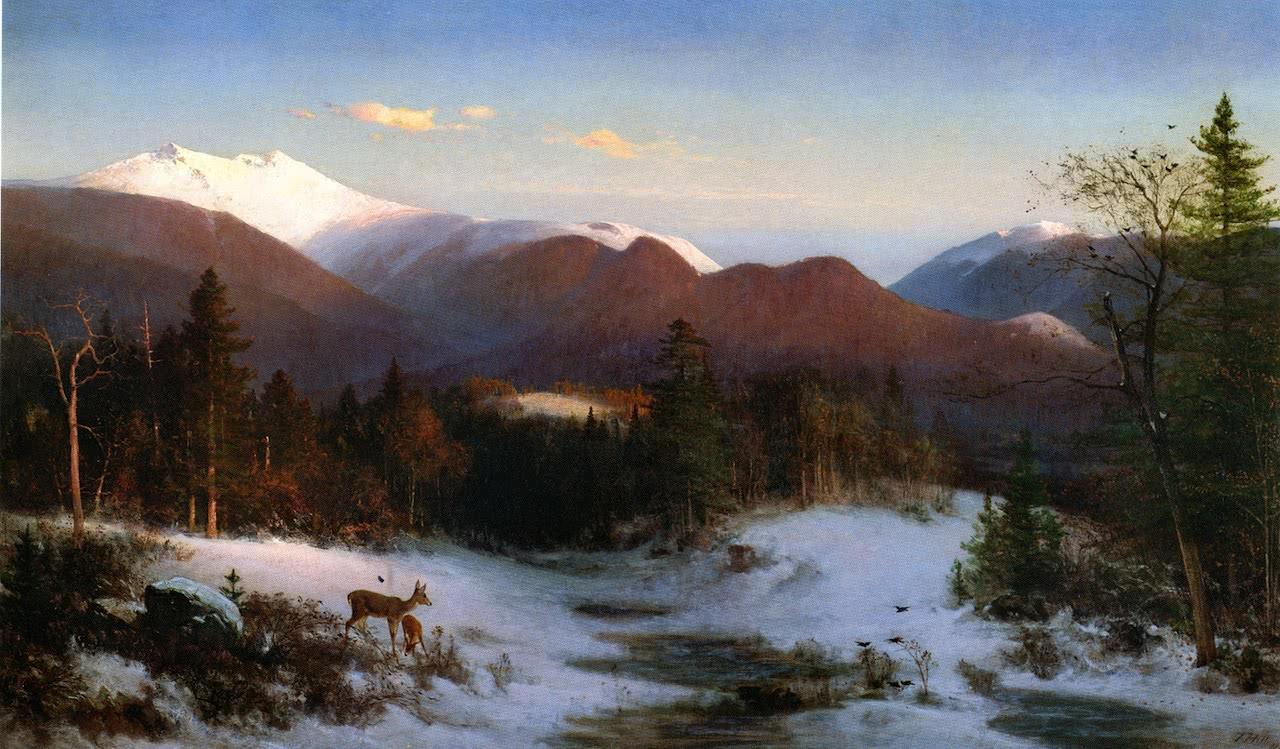

Read more about Thomas Hill.
Albert Bierstadt
Albert Bierstadt (1830 –1902) was a German-American painter best known for his lavish, sweeping landscapes of the American West. To paint the scenes, Bierstadt joined several journeys of the Westward Expansion.
He might also be called the ‘first photo-painter’. Going the westward route across the country, he took countless photographs and made sketches of the majestic mountain ranges and dramatic rock formations which became the studies for his massive canvases painted in his New York studio. In December 1857 the Boston Athenaeum bought one of his works, The Portico of Octavia Rome, thus assuring his career.
The artist's rugged, romanticized landscapes of the West, painted on a grand scale with an abundance of detail and dramatic lighting, captured the imagination of 19th-century art collectors and their interest catapulted Bierstadt to the top of the American art market. His paintings brought record prices and in his lifetime, Bierstadt enjoyed tremendous success and recognition.
Famous Colorado 14er - Mount Bierstadt was named in honor of Albert Bierstadt, the landscape painter who made the first recorded summit of the mountain in 1863.
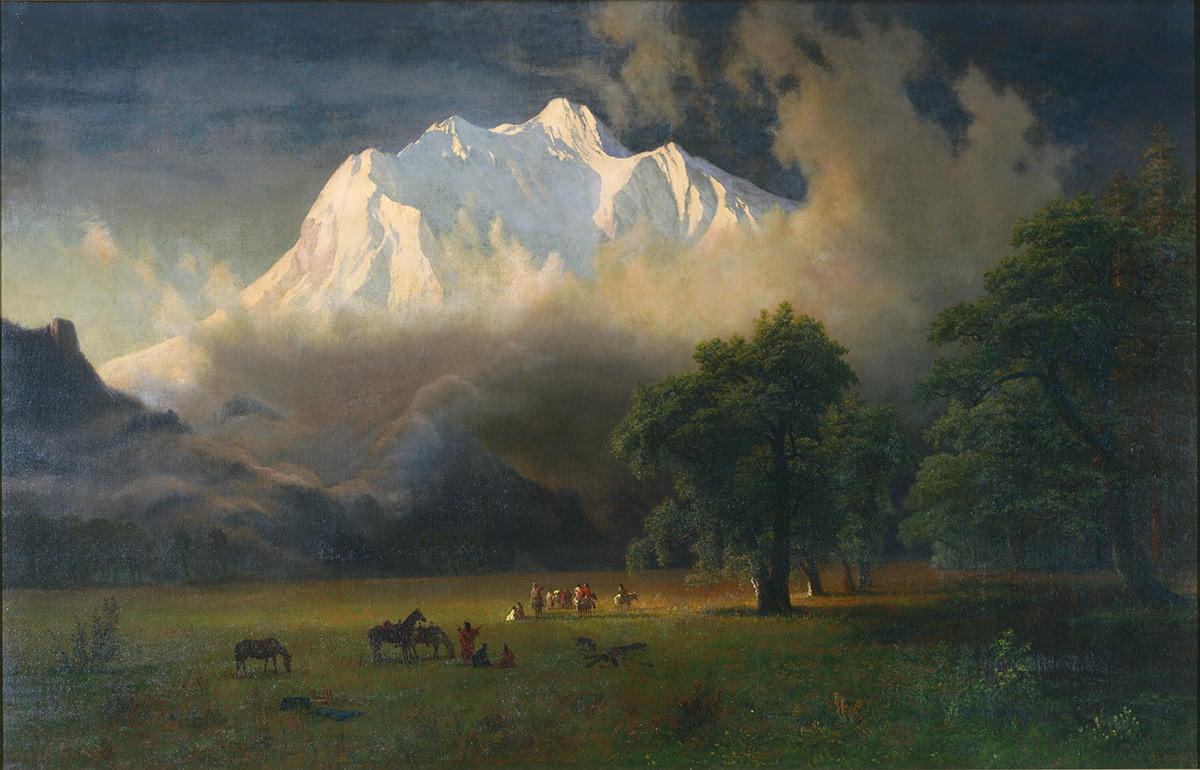

Read more about Albert Bierstadt.
Frederic Edwin Church
Frederic Edwin Church (1826 – 1900) was an American landscape painter, a central figure in the Hudson River School of American landscape painters, best known for painting large landscapes, often depicting mountains, waterfalls, and sunsets. Church's paintings put an emphasis on realistic detail, dramatic light, and panoramic views. These are all the techniques which contemporary landscape photographers are using in their work.
Church turned out to be a good marketologist as well. In 1853 and 1857, he traveled in South America, the trip was financed by businessman Cyrus West Field who wished to use Church's paintings to lure investors to his South American ventures.
Church was inspired by the Prussian explorer Alexander von Humboldt's Cosmos and his exploration of the continent; Humboldt had challenged artists to portray the "physiognomy" of the Andes. And they did it.
Have a look at the Cotopaxi painting depicting volcano’s eruption at a sunset!
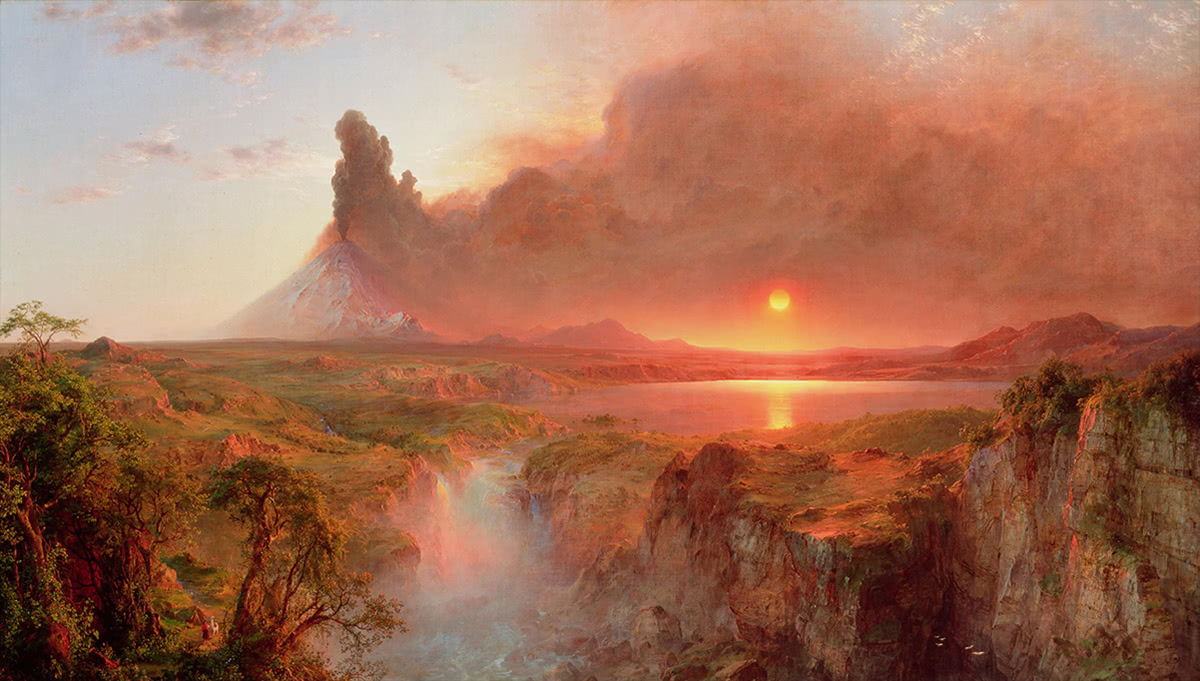
Read more about Frederic Edwin Church.
John Singer Sargent
Another rule breaker is John Singer Sargent (1856 – 1925), an American artist, whose life reminds you of the notorious Basil from “The Picture of Dorian Gray” by Oscar WIlde. While being considered the "leading portrait painter of his generation", he also dwelled into landscape art. He developed a way of making his subjects seem both close and distant.
As Trevor Fairbrother wrote of J.S. Sargent in The Sensualist: “His images present a vibrant, forceful realism while subtly projecting emotions, desires and intuitions as their visual subtext. He jabbed, dabbed, smeared, slapped, and scratched his paint surfaces; he deployed brilliant, murky, flashy, peculiar, and ravishing colours. All are the expressions of a man whose instincts and appetites were deeply sensual.”
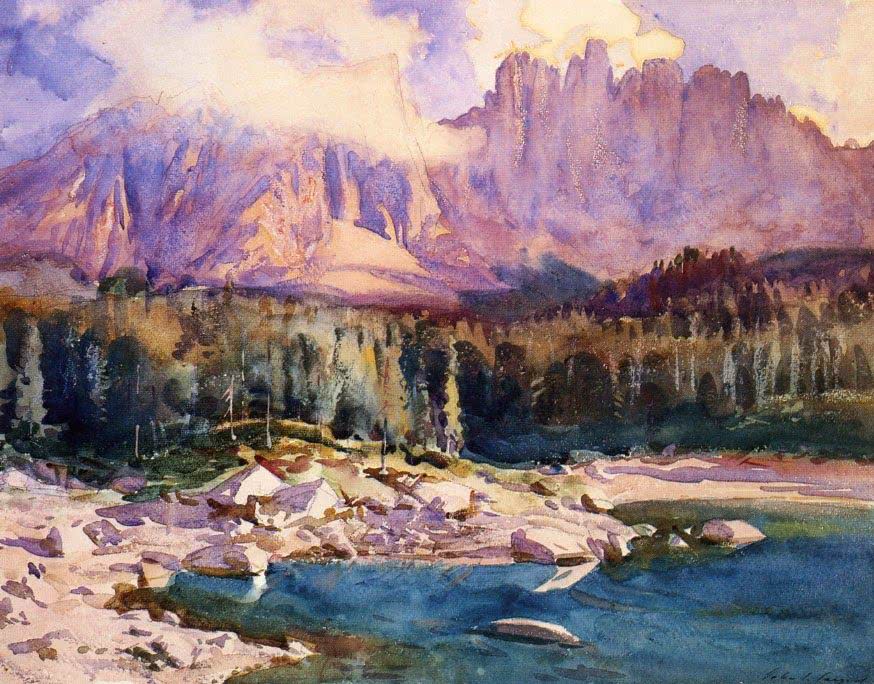
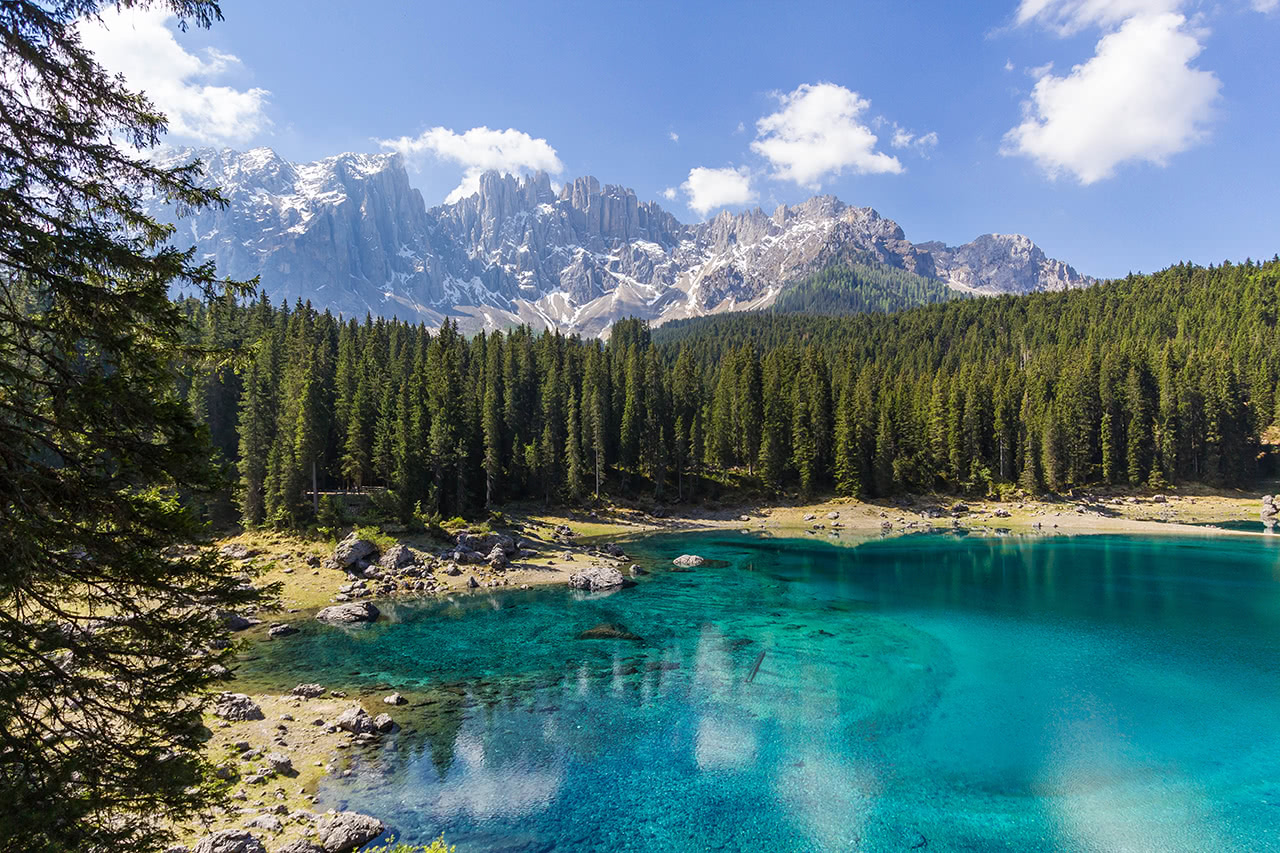
Read more about John Singer Sargent.
Asia
Shen Zhou
Finally, some oriental art, the oldest in our small collection!
Shen Zhou (Chinese: 沈周; pinyin: Shěn Zhōu, 1427–1509) was a Chinese painter in the Ming dynasty. His 500 year-old evocative drawing Poet on a Mountain Top (杖藜遠眺) above the sea of fog can’t fail to impress any outdoor enthusiast nowadays.
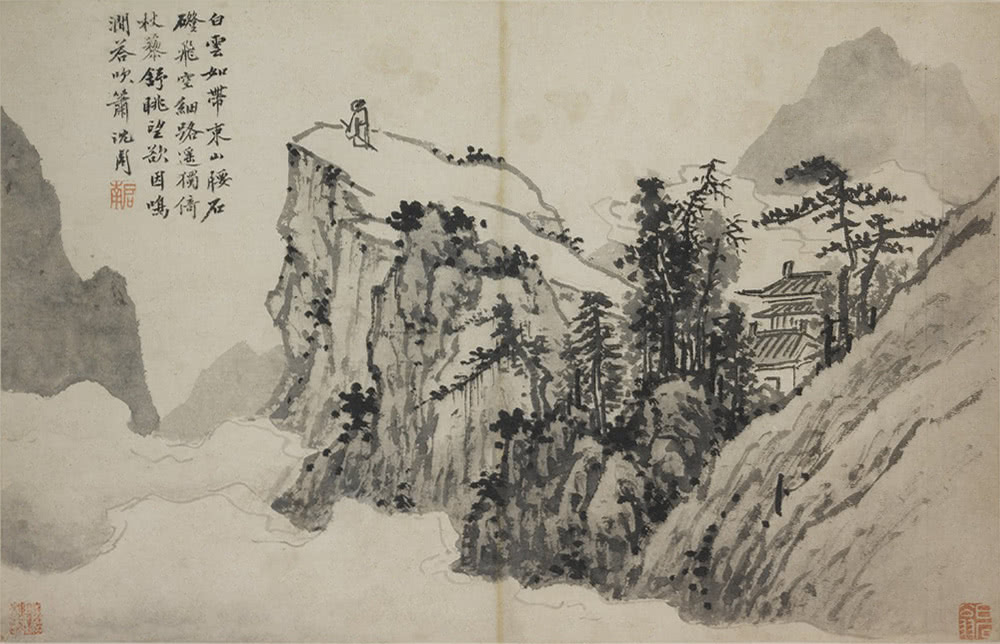
Read more about Shen Zhou on Wikipedia.
Hiroshi Yoshida
Hiroshi Yoshida (1876 - 1950) is known as one of the most important figures of the shin-hanga style (shin-hanga was an art movement in early 20th-century Japan, during the Taishō and Shōwa periods, that revitalized traditional ukiyo-e art rooted in the Edo and Meiji periods (17th–19th century). He was trained in the Western oil painting tradition, which was adopted in Japan during the Meiji period.
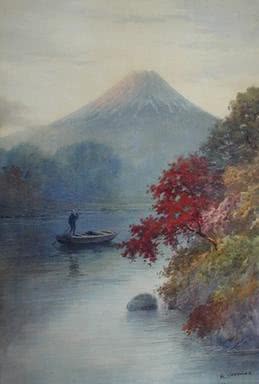
Hiroshi Yoshida was widely traveled and knowledgeable of Western aesthetics, yet maintained an allegiance to traditional Japanese techniques and traditions. Around the age of twenty, Yoshida left Kurume to study with Soritsu Tamura in Kyoto, subsequently moving to Tokyo and the tutelage of Shotaro Koyama. There, Yoshida studied Western-style painting, winning many exhibition prizes and making several trips to the United States, Europe and North Africa selling his watercolors and oil paintings. In 1902, he played a leading role in the organization of the Meiji Fine Arts Society into the Pacific Painting Association. While highly successful as an oil painter and watercolor artist, Yoshida turned to printmaking upon learning of the Western world’s infatuation with ukiyo-e.
Check out other masterpieces by Hiroshi Yoshida at Museum of Fine Arts Boston.
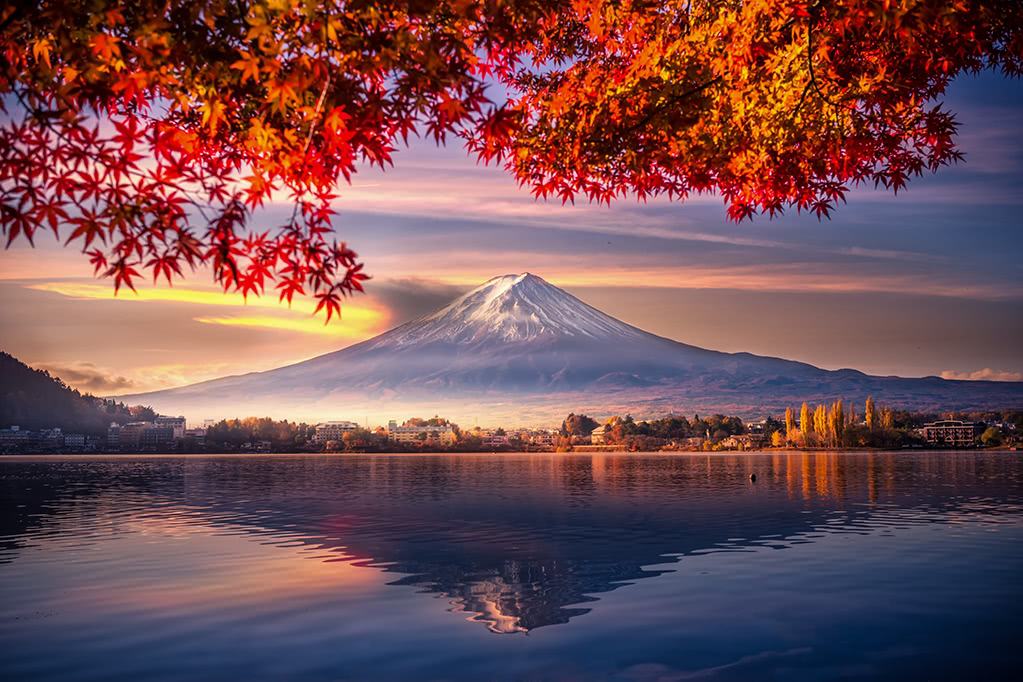
If you liked this article and like to see more about the intersections of art, technology, and nature then please let us know via email at peakvisor@routes.tips.
